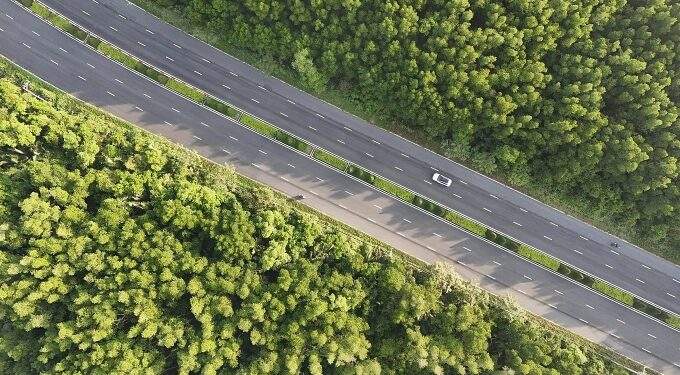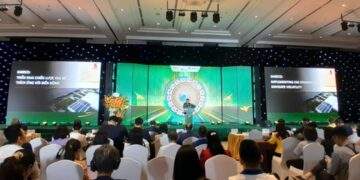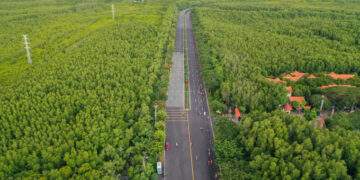The incentive, proposed by Can Gio deputy chairman Ho Van Binh at a conference Friday, is part of an initiative to make Can Gio a net-zero urban area focusing on green marine economic development, eco-tourism, leisure, and environmental protection.
 |
|
A road connecting downtown HCMC with Can Gio mangrove area, December 2024. Photo by VnExpress/Quynh Tran |
Under HCMC’s plan, Can Gio will see investments in clean energy, afforestation, and a full transition from gasoline to electric vehicles to make the area the city’s low-emission zone.
Can Gio, has a population of over 70,000, with approximately 33,000 motorbikes and nearly 1,000 cars.
The area is where conglomerate Vingroup is developing a $9-billion urban property project, set to be completed by 2030.
Its subsidiary VinSpeed also plans to build a 350-kilometer-per-hour metro line costing nearly $3 billion to link HCMC downtown with the coastal area.
Binh said that as 22% of the Can Gio population are classified as “near poor”, a full payout to help locals transition from gasoline-powered motorbikes to electric ones will elevate their financial burden.
Many locals are set to see their income reduced amid the construction of the new urban project, he added.
A representative of Vingroup told the conference that the company has proposed to HCMC many policies to support locals transition to electric vehicles.
It is offering to pay in full the registration fee for VinFast electric bike customers in HCMC from August 1 to Oct 31.
It will also offer a 3% reduction in interest rates for electric car loans over three years, a 10% discount on electric motorbike prices with a 10% reduction in loan interest rates for three years and free battery charging at V-Green public charging stations.
Located approximately 50 kilometers southeast of HCMC downtown, Can Gio spans 70,400 hectares, half of them are mangroves and protective forests.
The Can Gio wetland, linked to the restored mangrove ecosystem post-war, was recognized by UNESCO as Vietnam’s first World Biosphere Reserve.
Under HCMC’s 2021–2030 planning, Can Gio is set to become an ecological urban area, preserving its biosphere reserve while focusing on marine economic development, including an international transshipment port, a free trade zone, logistics, tourism, coastal ecological urban development, and renewable energy.





